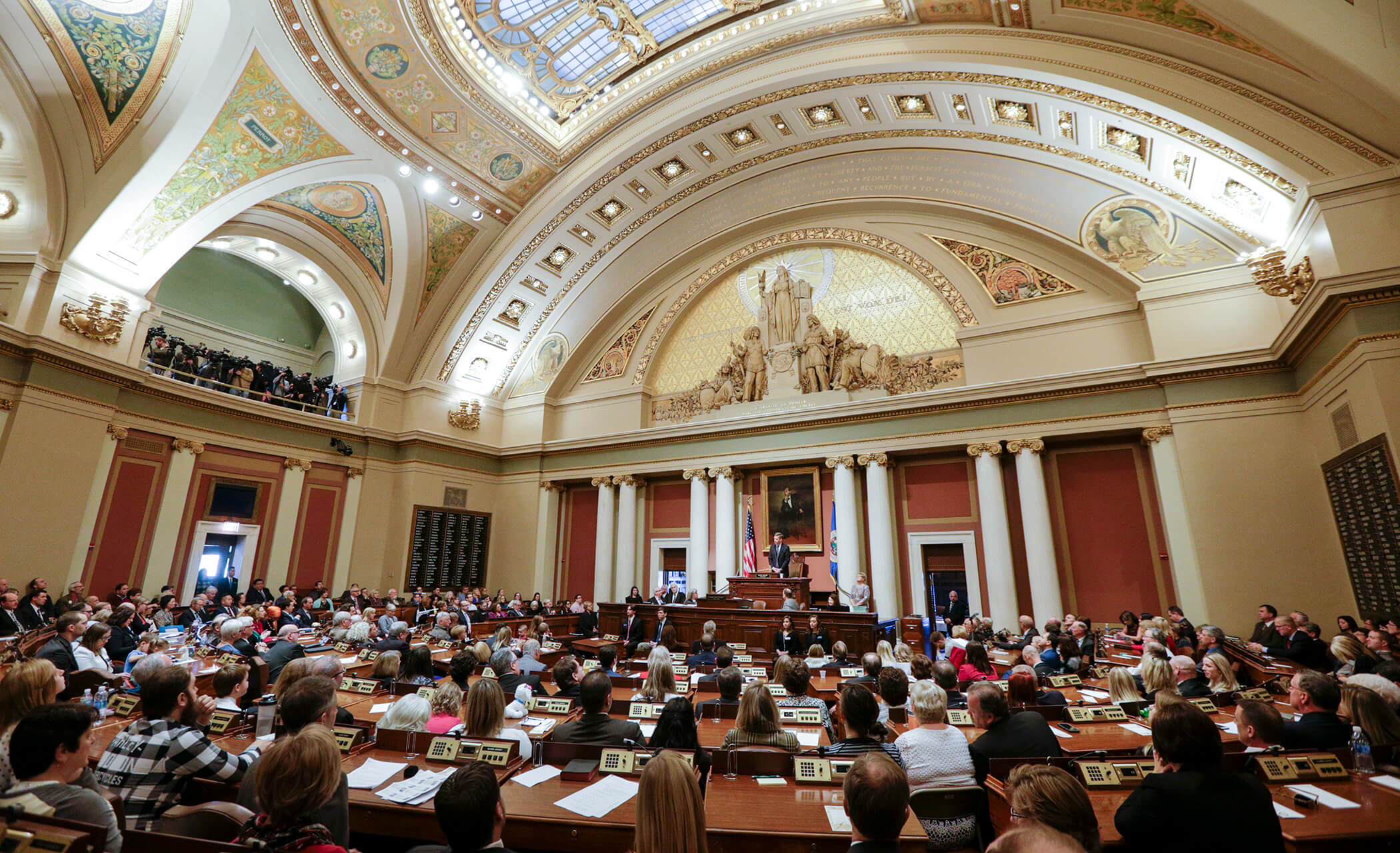 Reading Time: 3 minutes
Reading Time: 3 minutesLegislative leadership recently established deadlines to move bills through the process during the 2017 session. These deadlines are earlier than recent legislative sessions. As a result, we should start to see increased action at the committee and floor level on legislation that could impact corn farmers.
Under the schedule approved by Speaker of the House Kurt Daudt and Senate Majority Leader Paul Gazelka, all bills that have been introduced must be passed by the house of origin by Friday, March 10. By March 17, any bills making it past the first deadline (or their companion bills) must receive committee approval in the other house. Finally, major appropriation and finance bills must be approved by committees no later than March 31.
Buffers
In early February, the House Agriculture Policy Committee held an informal hearing on farm credit services and precision conservation practices. Adam Birr, executive director of MCGA, provided the committee a presentation on a collaborative research effort between University of Minnesota and BWSR. The research, funded by Minnesota’s corn farmers, would identify acceptable buffer alternative practices.
Birr will also take part in joint hearing on buffers, scheduled to take place Monday, Feb. 20, 5:30 p.m. in Minnesota Senate Building Room 1150. The hearing will take place in front of the joint Ag, Rural Development, and Housing Finance and Environment and Natural Resources Finance Committees. The information communicated during these hearings will become more valuable as bills aimed at amending Minnesota’s existing riparian buffer law are considered.
Ag Budget – Clean Water Fund
Within the Minnesota Department of Agriculture’s (MDA) 2018/19 budget request is a proposal for $17.6 million to be spent on a Clean Water Fund. Many of these proposals align directly with Gov. Dayton’s recently discussed plan to improve Minnesota water quality by 25 percent by the year 2025. In discussing his plan, Dayton emphasized his desire to engage in more of a grass-roots, voluntary statewide effort to achieve his aggressive goals. Included in the Clean Water Fund plan are requests for:
- Continuation of the Minnesota Agriculture Water Quality Certification Program ($5.5 million) – a voluntary program in which farmers are asked to implement measures to mitigate ag risks to water quality in exchange for being deemed to be in compliance with any new water quality laws or rules for 10 years.
- Nitrate in Groundwater program ($4.2 million) – a program in which MDA monitors groundwater and implements strategies to prevent or minimize the impact of nitrogen fertilizer on groundwater.
- Technical Assistance and On-Farm Demonstrations ($2.4 million) – projects will include on-farm, edge-of-field monitoring for sediment and nutrient loss as well as outreach and education on conservation practices.
Property Taxes
Gov. Dayton’s budget proposal includes a 40-percent credit on agriculture property taxes dedicated to school construction levies. Although budget bills are not expected to appear in the State House for a few weeks, legislative leaders have likewise voiced support for the tax credit.
Senate Majority Leader Paul Gazelka, at a recent AgriGrowth luncheon told Adam Birr and other attendees that ag property tax is a top priority. Proposals to reduce farm property taxes will be considered along with other tax policy when the House and Senate tax committees begin work on their large, omnibus tax bills in March. Stay tuned!


